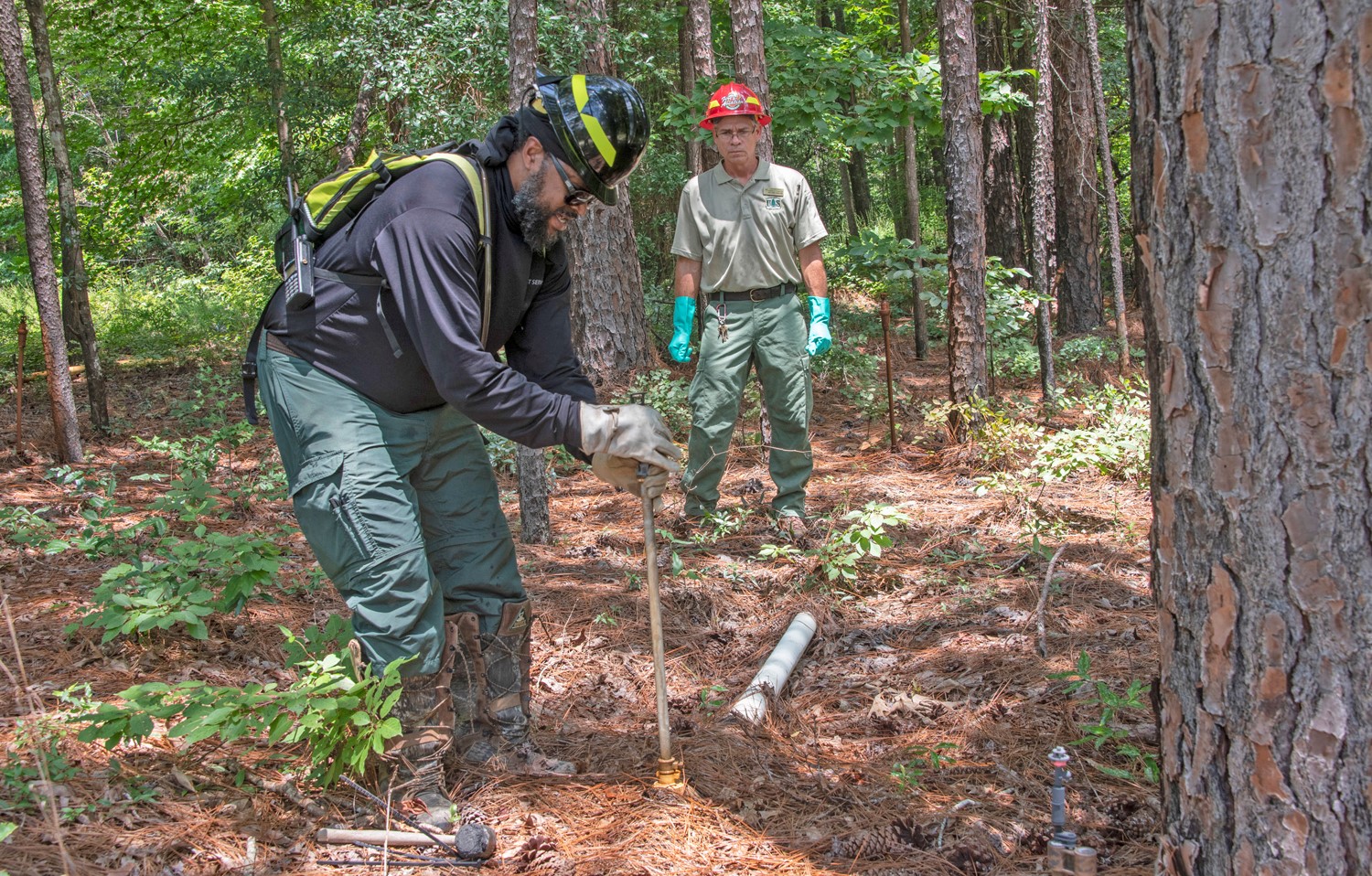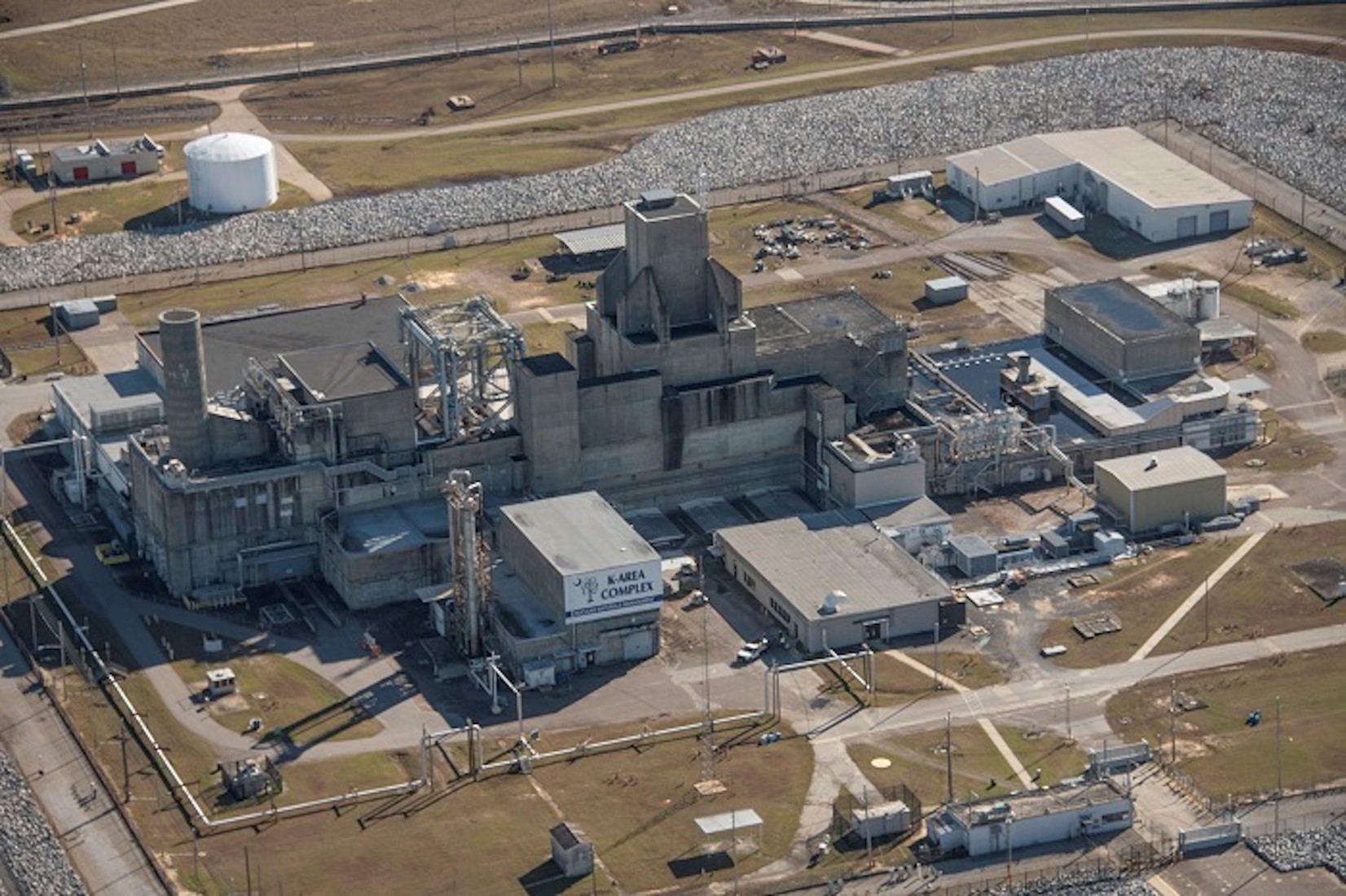SRNS's Communications and Media Services Department was honored with two 2021 Telly Awards. Members of the department include, from left, Robin Adney, Ian Rojas-Godoy, Brad Bohr, Nathan Lester, Steve Ashe, and Laura Russo. (Photo: DOE)
Along with established entertainment mediums such as Jennifer Garner’s “Pretend Cooking Show” and the Nickelodeon TV channel, Department of Energy contractor Savannah River Nuclear Solutions (SRNS) has been named a winner in two categories of this year’s Telly Awards.
SRNS’s Communications and Media Services Department won a Gold Telly for the video “Savannah River Site Overview” in the non-broadcast, corporate image category, and a Bronze Telly for “SRNS Now: September 2020” in the non-broadcast, employee communications category.
Workers demolish a large industrial cooling tower built in 1952 at the DOE’s Savannah River Site. (Photo: SRNS)
Savannah River Nuclear Solutions (SRNS), the management and operations contractor for the Department of Energy’s Savannah River Site, has torn down a large industrial cooling tower at the site’s D Area complex. The cooling tower, built in 1952, is one of more than 30 structures being removed from SRS’s D Area as the DOE works to reduce the site’s footprint.
U.S. Forest Service employees Secunda Hughes (left) and Andrew Thompson inspect irrigation piping and sprinkler heads, part of a 62-acre pine plantation used to safely disperse tritium at the Savannah River Site.
The Department of Energy’s Office of Environmental Management (EM) is managing the release of tritiated water using a 62-acre plantation of pine trees and other natural resources to limit radioactively contaminated groundwater from reaching waterways on the Savannah River Site in South Carolina.
F Area operator Thomas Harman (left) and SRNS scientist Kevin Boerstler check the pumps, sensors, and piping that blend a base concentrate to inject into acidic groundwater at the Savannah River Site. (Photo: DOE)
The Savannah River Site is reducing the flow of hazardous and radioactive metal contaminants to South Carolina’s rivers and streams by injecting a mix of clean water and baking soda into the site’s groundwater. The base mix neutralizes groundwater that has become acidic as a result of SRS’s chemical separations work, helping restrict the flow of contaminants.
Operators disassemble a cutter head inside a module at the Savannah River's Tritium Extraction Facility using manipulators and hand tools. (Photo: SRNS)
Using basic hand tools and remote manipulators, operators at Savannah River Nuclear Solutions (SRNS) were able to reduce radiation exposure to workers performing cutter head maintenance in the Savannah River Site’s Tritium Extraction Facility (TEF).
According to SRNS, the innovative procedure proved to be an excellent example of real-world application of As Low As Reasonably Achievable (ALARA) principles of time, distance, and shielding.
A view of Savannah River’s K Area Complex, where plutonium downblending operations take place. (Photo: DOE)
The Department of Energy’s Office of Environmental Management has doubled the number of work shifts for employees in glove box operations at its Savannah River Site in South Carolina. The increased work pace will help the department meet its commitment to South Carolina to remove surplus plutonium from the state, the DOE said.
From left, SRNS mechanic Todd Cockrell, engineer John Bradley, and project manager Joao Cardoso-Neto plan the removal of a vapor extraction unit at the Savannah River Site. (Photo: DOE)
Department of Energy site contractors Savannah River Nuclear Solutions and Savannah River Remediation received high marks from a recent independent audit of their environmental management work at the Savannah River Site in South Carolina.
A train pushes a container full of old equipment from H Canyon to a Savannah River Site disposal facility to make way for a new spent nuclear fuel dissolving campaign. (Photo: DOE)
The Department of Energy is preparing for an upcoming campaign to dissolve stainless-steel-clad spent nuclear fuel at its Savannah River Site in South Carolina by installing a new dissolver and an additional double-sized tank for storing dissolved material.
SRNS subcontractors Donald Miles and Richard Mooney drill for soil samples as part of a project to immobilize I-129 in the groundwater and soil at the Savannah River Site. Photo: DOE/SRNS
A silver chloride–based cleanup technology is expected to reduce radioactive iodine-129 contamination found in soil and groundwater near the center of the Department of Energy’s Savannah River Site in South Carolina to levels well below regulatory limits. The I-129 was created during the production of plutonium and tritium at the site throughout the Cold War era.
SRNS engineers (from left) Will Jolin, John Bradley, and Joao Cardoso-Neto discuss a plan to move and repurpose equipment used at 19 soil cleanup sites. Photo: DOE
A project to passively remove nonradioactive contaminants from the soil and groundwater at the Department of Energy’s Savannah River Site in South Carolina is coming to an end, as workers prepare to remove solar-power “plugs” from 19 soil remediation locations at the site.




 and Andrew Thompson.jpg)







